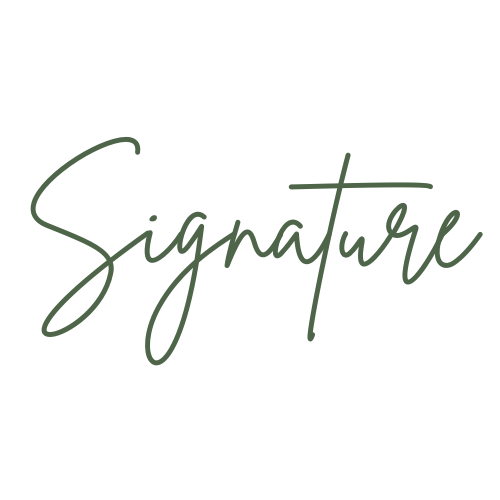Forgeries That Fooled the Experts—And What We Can Learn From Them
The art world is no stranger to deception. Throughout history, some of the most convincing forgeries have not only fooled collectors but also respected museums, galleries, and even seasoned art experts. With skilled forgers replicating brushstrokes, aging materials, and faking provenance records, it’s no wonder that some of these fakes remained undetected for years—sometimes even decades.
At Signature, we specialize in fine art authentication, using a combination of stylistic analysis, provenance research, and scientific testing to uncover the truth. But as history shows, even the best can be deceived. Here are some of the most infamous forgeries that fooled the art world—and the lessons they teach us about authentication.
1. The Most Successful Art Forger in History: Han van Meegeren (Fake Vermeers)
The Forger: Han van Meegeren
Who He Fooled: The Dutch government, Nazi leader Hermann Göring, and top museum experts
Time Period: 1930s-40s
The Scam:
Han van Meegeren was one of the greatest art forgers of all time, successfully faking multiple paintings in the style of Johannes Vermeer, a 17th-century Dutch master. His work was so convincing that experts praised his forgeries as "newly discovered masterpieces."
His most infamous fake, The Supper at Emmaus, was even acquired by the Dutch Royal Picture Gallery. He later sold another forged Vermeer to Hermann Göring, one of Hitler’s top officials, during World War II. When accused of selling a national treasure to the Nazis, he confessed to forgery to avoid treason charges—and shocked the world.
Lesson Learned: Even experts can be fooled by convincing stylistic imitation. That’s why we combine comparative analysis with scientific testing and provenance research—to ensure every piece has historical backing.
How It Could Have Been Caught: Pigment analysis would have revealed modern paint components not used in Vermeer’s time.
2. The “Sleeping Lady” That Sold for Millions: A Fake Modigliani
The Forger: Unknown (Forgery ring in Italy)
Who They Fooled: Collectors and auction houses
Time Period: 2017
The Scam:
In 2017, an exhibition in Genoa dedicated to Amedeo Modigliani was shut down after 20 out of 21 paintings were revealed to be forgeries. Among them was The Sleeping Lady, a stunning portrait that fetched millions at auction before suspicions arose.
For years, Modigliani forgeries have flooded the market, partly because his long, stylized portraits seem deceptively simple to copy. Without proper authentication, forged Modiglianis continue to circulate today.
Lesson Learned: Buying high-value art without authentication is a massive risk. Even in prestigious exhibitions, forgeries can slip through.
How It Could Have Been Caught: Provenance research would have revealed gaps in ownership history, and scientific testing could have identified anachronistic materials.
3. The Spanish "Dalí" That Was Anything But Surreal
The Forger: A large-scale forgery operation in Spain
Who They Fooled: International collectors
Time Period: 2018
The Scam:
A massive fake Salvador Dalí operation was uncovered in 2018, when Spanish police seized over 200 counterfeit artworks falsely attributed to Dalí and other 20th-century masters. These fakes came with forged certificates of authenticity to make them seem legitimate.
Lesson Learned: A certificate of authenticity doesn’t always mean an artwork is genuine. Forgers often create fake documentation to make their work seem credible.
How It Could Have Been Caught: Comparative analysis of known Dalí prints could have exposed stylistic inconsistencies, and handwriting analysis could have identified fake signatures.
4. The “Lost” Van Gogh That Wasn’t
The Forger: Unknown
Who They Fooled: Collectors and a museum
Time Period: 2003
The Scam:
A stunning “Van Gogh” landscape painting was displayed in a museum for years, until experts noticed subtle stylistic inconsistencies. Upon further investigation, pigment testing revealed a color that Van Gogh never used—proving the painting was fake.
Lesson Learned: Stylistic analysis can detect fakes even before scientific testing. Many forgeries look authentic at first glance, but subtle differences in brushwork, composition, or color choices can expose them.
How It Could Have Been Caught: Comparative analysis could have raised suspicions early on, avoiding reliance on scientific testing years later.
5. The “Master” of All Forgers: Wolfgang Beltracchi
The Forger: Wolfgang Beltracchi
Who He Fooled: Museums, auction houses, and private collectors
Time Period: 1990s-2010
The Scam:
One of the most successful forgers in history, Wolfgang Beltracchi created and sold hundreds of fake paintings, mimicking artists like Max Ernst, Heinrich Campendonk, and Kees van Dongen. His paintings fooled major auction houses and fetched millions.
His downfall? Scientific testing. A single forged pigment in one of his works proved that the painting couldn’t be from the period claimed. [Fun fact: Signature often consults and works closely with the scientist who was responsible for bringing him down, Dr. Nicholas Eastaugh]
Lesson Learned: Even the best forgers make mistakes. No matter how convincing the style, scientific testing can catch fakes.
How It Could Have Been Caught Earlier: Stronger provenance research could have exposed the lack of verifiable ownership history.
How to Protect Yourself from Art Forgeries
These cases prove that forgeries can fool even top experts—but with the right authentication process, collectors can avoid costly mistakes.
At Signature, we use a multi-step authentication process to verify authenticity:
Comparative Analysis – Examining brushwork, composition, and known artist techniques.
Provenance Research – Tracing ownership history and exhibition records.
Scientific Testing – Analyzing pigments, materials, and hidden layers to detect anachronisms.
Think You Might Own a Forgery? Here’s What to Do Next.
If you own an artwork of uncertain origin, don’t wait until it’s too late. Our art authentication experts can determine whether your piece is a genuine masterpiece or a clever fake.
Have your artwork evaluated today. Contact us to learn more about our authentication research services.
